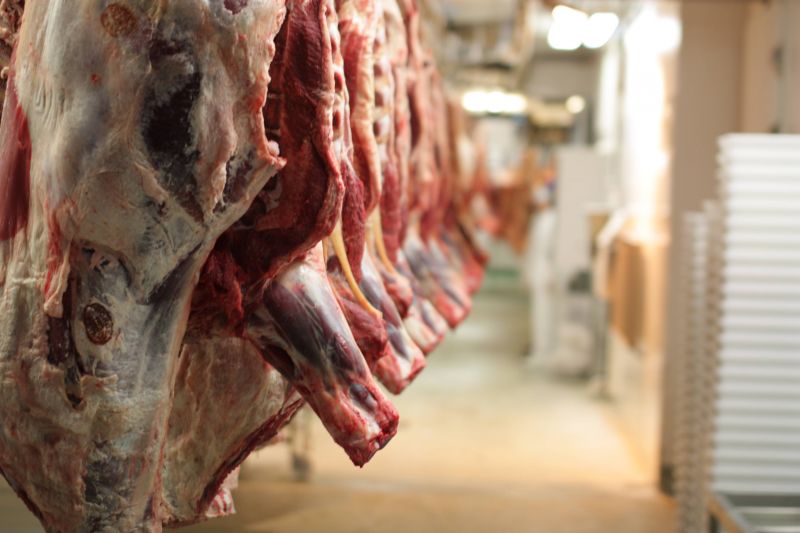Three Quarters of Large U.S. Slaughterhouses Violate Water Pollution Permits
Published on by Water Network Research, Official research team of The Water Network in Government
EPA Records Show 74 of 98 U.S. Meat-Processing Plants that Discharge Directly to Waterways Exceeded Legal Limits in 2016-2018.
By Tom Pelton
Three quarters of large U.S. meat processing plants that discharge their wastewater directly into streams and rivers violated their pollution control permits over the last two years, with some dumping as much nitrogen pollution as small cities – and facing little or no enforcement.

Representative Image, Source: Wikimedia Commons, Labeled for Reuse
The nonprofit Environmental Integrity Project (EIP) examined EPA records for 98 large meat-processing plants that released more than 250,000 gallons per day into waterways from January 2016 through June 2018 and found that 74 of the plants had exceeded their permit limits for nitrogen, fecal bacteria, or other pollutants at least once. More than half of the plants (50 of 98) had five violations, and a third (32 of 98) had at least 10 violations, according to the EPA data.
EIP’s new report, “Water Pollution from Slaughterhouses,” with research from Earthjustice, also discovered that 60 of the 98 plants release their wastewater to rivers, streams, and other waterways that are impaired because of the main pollutants found in slaughterhouse wastewater: bacteria, pathogens, nutrients, and other oxygen-depleting substances.
“This water pollution is really an environmental justice issue, because many of these slaughterhouses are owned by wealthy international companies, and they are contaminating the rivers and drinking water supplies of rural, often lower-income, minority communities,” said Eric Schaeffer, Executive Director of the Environmental Integrity Project.
“State environmental agencies need to start cracking down on and penalizing these flagrant violations of the federal Clean Water Act,” said Schaeffer, former Director of Civil Enforcement at EPA. “And EPA needs to step in and set stronger national water pollution standards for meat processing plants.”
Peter Lehner, senior attorney at Earthjustice, said: “Slaughterhouses are another dirty link in the highly polluting industrial meat production chain. From polluted runoff from over-fertilized fields growing animal feed, to often-leaking manure lagoons and contaminated runoff at concentrated animal feeding operations, and to industrial slaughterhouses, the way most of our meat is now produced impairs our drinking water and public health. We need to clean up every stage.”
The report ranks the worst polluters in the U.S. in terms of total nitrogen pollution (which fuels excessive algae growth and creates fish-killing low-oxygen “dead zones”). The most polluting slaughterhouse in U.S. last year was the JBS pork processing plant in Beardstown, Illinois, which released 1,849 pounds of nitrogen a day, on average, into a tributary to the Illinois River. That was equivalent to the load in raw sewage from a city of 79,000 people, according to EPA data. The pork plant, once owned by Cargill but now owned the Brazilian-based international meat company JBS, was also responsible for a spill of 29 million gallons of hog waste in March, 2015, which killed almost 65,000 fish.
Read Full Article: Environmental Integrity Project
Full Report Available HERE
Media
Taxonomy
- Wastewater Disposal
- Reclaimed Wastewater
- Industrial Wastewater Treatment
- Decentralized Wastewater
- Wastewater Treatment
- Wastewater Collection
- Pollution
- Water Pollution Control
- Slaughter Houses